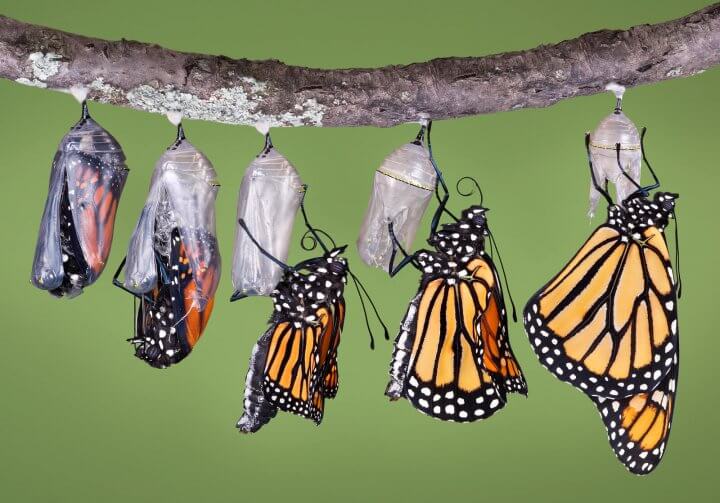Monarch butterflies may be the most easily recognizable of all the butterflies, but there are many unique characteristics of the Monarch butterfly that many people are not aware of.
The Monarch butterfly is poisonous
* The Monarch butterfly feeds off of the milkweed plant when it first hatches. This milkweed reacts with the chemicals in the butterfly’s body and creates a poisonous combination.
* Monarch butterflies do not need to camouflage themselves because predators recognize that their brightly colored wings mean that they would be a deadly treat. In fact, many other animals who are poisonous will also advertise their danger with bright colors.
* Spiders, reptiles and certain mammals and birds are able to eat the Monarch without ill effect.
The Monarch butterfly’s migration is nothing short of amazing
* Since they are not warm-blooded, winter presents a difficult challenge for insects. The water in their body tissues would freeze as the temperature dropped, literally tearing them apart inside.
* Monarchs are especially noted for their lengthy annual migration. They make massive southward migrations that usually start in August. The majority of Monarch butterflies head to Mexico to wait out the cold. Naturally, a northward migration takes place in the spring.
* The length of these journeys exceeds the normal lifespan of most Monarchs, which is less than two months for butterflies born in early summer. Amazingly though, the subsequent generations of the Monarch who are born in route to the winter resting place follow the exact same patterns as their predecessors and are able to continue on the journey in the right direction. Sometimes a butterfly will go through three or four generations before the length of the migration is reached.
The difference between male and female Monarch butterflies
* The females have darker veins (black stripes) on their wings.
* The males have a spot in the center of each hind-wing. These spots are where their pheromones are released. These pheromones are irresistible to lady butterflies and assist greatly in the reproductive process.
* The average wingspan of a Monarch butterfly is approximately four inches and their approximate weight is half an ounce. Males are slightly bigger than females.
The life cycle of a Monarch butterfly
The Monarch goes through four radically different stages:
1. The eggs are laid on milkweed plants by the females during spring and summer breeding months.
2. The eggs hatch, and the caterpillars emerge. The caterpillars consume their egg cases (an important source of nutrients), then feed on milkweed. During the caterpillar stage, Monarchs store energy in the form of fat and nutrients to carry them through the non-feeding pupa stage.
3. In the pupa or chrysalis stage, the caterpillar spins a silk pad on a twig, leaf, etc. and hangs from this pad by its last pair of pro-legs. It hangs upside down in a crook shape, and then molts. What is left is the caterpillar inside of an articulated green exoskeleton or the cocoon as it is more popularly known. At this point, hormonal changes occur inside of the cocoon, leading to the development of a butterfly.
4. The mature butterfly emerges from its shell after about two weeks. It gains nourishment by eating a variety of flowers, including milkweed flowers, red clover, and goldenrod.
Threats to the Monarch butterfly include:
* Deforestation of the winter grounds in Mexico have led to a drastic reduction in the Monarch butterfly population.
* Monarch butterflies are susceptible to Ophryocystis elektroscirrha, a protozoan which parasitizes them. It is present on the abdomen of adult butterflies and passed to their offspring when the spores rub off during egg-laying. These spores can be easily digested by the caterpillar offspring as they eat the spore-covered leaves of milkweed after birth.


Leave a Reply